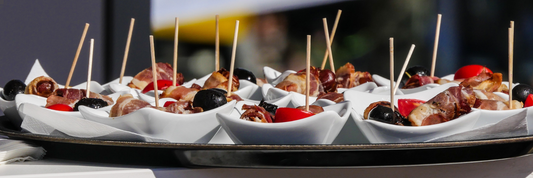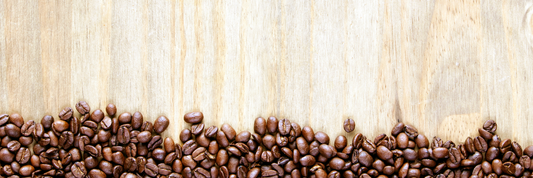In the world of packaging, choosing the right solution for your product is crucial. Two popular options are folding cartons and corrugated boxes, each with its unique set of features and ideal uses. While folding cartons are commonly used for retail packaging, corrugated boxes are the go-to choice for shipping and e-commerce. In this post, we’ll dive into the differences between these two packaging types, their advantages and disadvantages, and help you determine which one is the best fit for your business needs.
Defining Folding Cartons: Sleek and Versatile
What is a Folding Carton?
Folding cartons are packaging solutions made from paperboard, which is a single layer of thick paper-based material. These cartons are lightweight and designed to be easily folded and assembled.
- Material Composition: Made from paperboard.
- Lightweight & Convenient: Easy to handle and transport.
- Storage Efficiency: Folds flat to save space before assembly.
- Printability: Excellent for branding, allowing vibrant graphics and text.
- Customization: Features like windows and custom die-cuts can enhance product appeal.
- Usage Context: Primarily used for lighter, non-fragile items within controlled distribution environments.
Common Applications of Folding Cartons
Folding cartons serve a variety of industries and products, making them a versatile choice. Some common applications include:
- Food Packaging: Cereal boxes and frozen food cartons are familiar examples.
- Cosmetics and Personal Care Products: Their eye-catching designs attract consumers.
- Pharmaceuticals and Healthcare Products: Packaging often prioritizes safety and clarity.
- Electronics and Small Consumer Goods: Provides both protection and branding.
- Retail Displays and Promotional Packaging: Draws customer attention right at the point of sale.

Understanding Corrugated Boxes: Strength and Durability
What is a Corrugated Box?
Corrugated boxes are crafted from corrugated fiberboard, which consists of multiple layers, including a fluted inner layer sandwiched between linerboards. This design makes them well-known for their strength and durability.
- Material Composition: Made from corrugated fiberboard.
- Durability & Strength: Capable of handling significant weight without sacrificing integrity.
- Protection: Provides excellent protection during shipping and storage.
- Customization: Different flute types (A, B, C, E, F) can be selected to adjust strength and thickness to suit various needs.
- Usage Context: Typically used for transporting heavier, fragile items and for bulk shipments, owing to their structural integrity and cushioning properties.
Common Applications of Corrugated Boxes
The robust nature of corrugated boxes makes them the go-to choice for numerous applications:
- Shipping and E-commerce Packaging: They ensure products arrive safely at their destination.
- Industrial Packaging: Ideal for heavy-duty goods that require additional protection.
- Storage and Warehousing: Often employed for storing goods effectively over time.
- Moving Boxes: The durability provides peace of mind when relocating.
- Point-of-Sale Displays: Sometimes enhanced with high-quality printing to attract shoppers.

Key Differences: Folding Carton vs Corrugated Box
Material and Structure
Folding cartons and corrugated boxes are both popular packaging options, but they differ significantly in their material and structural design.
- Folding Carton: This packaging type is made from a single layer of paperboard. It is typically thin, which makes it suitable for lighter products such as cosmetics, snacks, and retail items. The material allows for vibrant prints and designs, enhancing the visual appeal of the product on shelves. Because they are made from a single layer, folding cartons can also be folded flat, making them easy to store and transport.
- Corrugated Box: In contrast, a corrugated box is constructed from multiple layers, consisting of a fluted core sandwiched between two liners. This unique structure provides much stronger support, making corrugated boxes ideal for heavier items or those that require extra protection during shipping. The extra layers provide cushioning against shocks and pressure, which is crucial for protecting fragile products.
Strength and Durability
When it comes to strength and durability, folding cartons and corrugated boxes serve different functions based on the intended use.
- Folding Carton: These boxes are designed for lower weight items and are best suited for controlled environments where they won't face significant external pressure. They offer adequate protection but are not built to withstand rough handling or heavy stacking.
- Corrugated Box: On the other hand, corrugated boxes shine in durability and strength. They are specifically engineered to handle heavier loads and can endure rough handling during transit. For instance, items like electronics or glassware are typically packed in corrugated boxes to minimize the risk of damage and ensure they arrive safely.
Printability and Aesthetics
The visual aspect of packaging can significantly impact a consumer's purchasing decision. This is where the differences between folding cartons and corrugated boxes come into play.
- Folding Carton: The smooth surface of folding cartons makes them an excellent choice for high-quality printing and intricate graphics. Brands often choose folding cartons when they want to capture attention on retail shelves, using vibrant colors and creative designs to enhance brand identity. The aesthetic quality of folding cartons can enhance customer appeal and brand perception significantly.
- Corrugated Box: While corrugated boxes can also be printed upon, the texture of the material can make it challenging to achieve fine details. However, improvements in printing techniques like litho-lamination can help create better visuals. Generally, corrugated boxes are more utilitarian, focusing on function rather than fashion.
Cost Considerations
Cost is a critical factor for businesses when choosing packaging solutions. Both folding cartons and corrugated boxes have different cost implications based on their production processes and materials used.
- Folding Carton: These boxes tend to be more cost-effective for mass production runs, especially for lighter items. Their simpler design and the less costly material translate to lower production costs, making them an attractive option for brands focused on budget efficiency.
- Corrugated Box: Though corrugated boxes can be a bit more expensive due to their material and construction complexities, they provide greater protection, which can minimize unexpected costs related to damage during shipping. The initial higher investment can lead to overall savings when considering the reduction in product loss.
Weight and Space Efficiency
The efficiency of packaging in terms of weight and space is another important factor to consider.
- Folding Carton: One of the significant advantages of folding cartons is their lightweight nature. They can be folded flat when not in use, leading to reduced storage space requirements. This efficiency can significantly lower shipping costs, especially for businesses focused on sustainability and cost-effectiveness.
- Corrugated Box: Corrugated boxes can be heavier, depending on the thickness of the material used. However, like folding cartons, they also fold flat for storage, which helps to save space. Despite the added weight, their structural integrity makes them worthwhile for certain heavier or fragile products.
Environmental Impact
As sustainability becomes a vital consideration in packaging choices, the environmental impact of folding cartons and corrugated boxes is crucial.
- Both packaging types are typically made from recyclable materials and can be recycled after use. However, the sourcing of materials and the methods used for production can vary. Generally, corrugated boxes often utilize a higher percentage of recycled content, while folding cartons might vary based on manufacturer practices.
In terms of end-of-life options, both can be recycled, which is a positive aspect in the context of increasing environmental awareness. Brands focused on sustainability can often find eco-friendly options with both types of packaging.

Choosing the Right: Factors to Consider
Product: Weight, Frag, Size, and Shape
When selecting, understanding the product characteristics is crucial Weight and fragility play a significant role in determining the best type of box. Lightweight, fragile items such as glassware often benefit from the cushioning properties of corrugated boxes. These boxes are designed with multiple layers, providing the necessary strength and protection. On the other hand, heavier or sturdier products may be better suited to folding cartons, especially if they are not particularly fragile.
Size and shape also come into play. If the item has an irregular shape, custom-shaped corrugated boxes can be tailored to fit, minimizing movement during shipping. In contrast, folding cartons often have standardized shapes that might not accommodate every unique item.
Shipping and Handling Requirements: Distance, Transportation Method, and Potential Hazards
Shipping requirements significantly impact your choice between a folding carton and a corrugated box. Distance matters; for long-distance shipping, corrugated boxes offer more protection against potential hazards such as rough handling and changes in temperature or humidity. If the item will be shipped internationally, using a more durable corrugated box could be essential.
Consider the transportation method as well. Items shipped via freight may require the extra strength of corrugated boxes due to potential stacking and compression during transport. If products are delivered locally and hand-carried, folding cartons might suffice.
Branding and Marketing Goals: Visual Appeal, Shelf Presence, and Customer Experience
Another key consideration is how packaging affects branding and marketing. Visual appeal is often more pronounced in folding cartons, which can showcase vibrant graphics and elaborate designs. This is crucial for retail environments where first impressions matter significantly. A well-designed folding carton can make products stand out on the shelves, enhancing brand perception.
Conversely, corrugated boxes often prioritize functionality over aesthetic appeal. However, they can still be customized with printing and designs that reflect brand identity. When the customer experience is considered, folding cartons can offer a more upscale unboxing experience, which can influence customer satisfaction and loyalty.
What Paper Is Used to Make Gable Boxes in Food Industry?
Budget Constraints: Balancing Cost with Necessary Protection and Presentation
Budget plays a vital role in packaging selection. Folding cartons are generally less expensive in terms of raw materials, making them a cost-effective solution for many brands. However, if you require the extra durability of corrugated boxes for fragile or heavy items, the investment may be worthwhile.
It is essential to find a balance between cost and necessary protection. Sometimes, opting for a more robust packaging solution, even at a higher upfront cost, can prevent damage during shipping and, ultimately, save money in replacement costs or returns.
Sustainability Goals: Material Choices and Recyclability
Today’s consumers are increasingly concerned about sustainability. Both packaging options have strengths in this area, but they differ slightly in materials used. Folding cartons are typically made from paperboard, which is usually recyclable. Corrugated boxes often boast a higher percentage of recycled content, which can appeal to eco-conscious customers.
Choosing a material that reflects sustainability goals can enhance brand reputation. It’s essential to consider the entire lifecycle of the packaging, from production through disposal, when making your decision.

Conclusion
When deciding between folding cartons and corrugated boxes, it is crucial to weigh the key differences and specific needs of your products and brand. Folding cartons excel in visual appeal and are ideal for lighter, less fragile items, while corrugated boxes provide superior protection for heavier or delicate goods, making them better suited for shipping.
Ultimately, considering your priorities and the unique characteristics of your products will guide you in making an informed choice. Evaluate every aspect carefully, from shipping logistics to branding, and choose the packaging that aligns best with your overall goals.
Frequently Asked Questions (FAQs)
Q1: What is the main difference in material between a folding carton and a corrugated box?
A: A folding carton is made from a single layer of paperboard, while a corrugated box is made from multiple layers of corrugated fiberboard with a fluted inner layer.
Q2: Which type of box offers better protection for shipping fragile items?
A: Corrugated boxes offer superior strength and cushioning, making them ideal for shipping fragile items.
Q3: Are folding cartons or corrugated boxes more environmentally friendly?
A: Both are generally recyclable, but it depends on the specific materials used. Corrugated boxes often have a higher percentage of recycled content.
Q4: Can I print high-quality graphics on both folding cartons and corrugated boxes?
A: Yes, but folding cartons typically offer a smoother surface for more detailed and vibrant printing, making them better for retail-facing designs.




